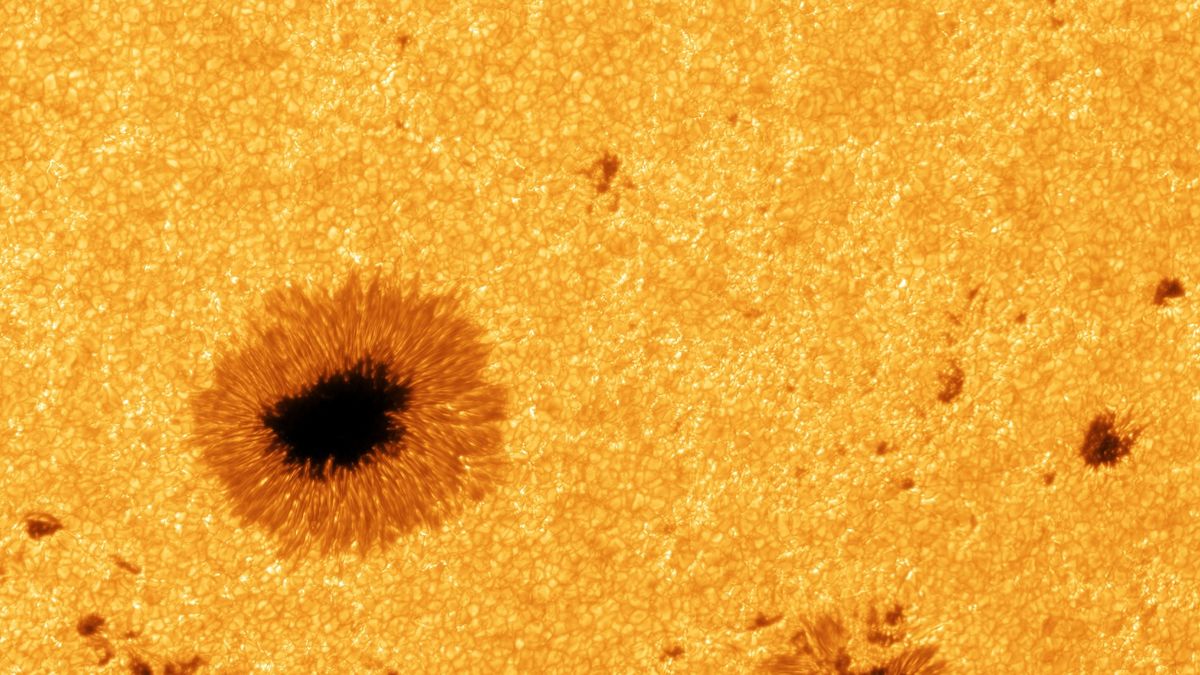Now Reading: Stunning 8K Images Reveal Detailed Sunspots on the Sun
-
01
Stunning 8K Images Reveal Detailed Sunspots on the Sun
Stunning 8K Images Reveal Detailed Sunspots on the Sun

Speedy Summary:
- new images of the sun’s surface have been captured, offering unprecedented clarity and resolution, showcasing intricate solar activities such as raging sunspots, plasma flows, and magnetic field structures.
- An advanced camera system developed by the Leibniz Institute for Astrophysics Potsdam was installed at the Vacuum Tower telescope located at Observatorio del Teide in Tenerife.
- The system employs 8K resolution image restoration techniques using short-exposure images combined from 100 individual frames captured at 25 frames per second.
- Achieving a spatial resolution of approximately 62 miles on the sun’s surface mitigates atmospheric disturbances.
- The technology enables dynamic observations over areas up to 124,274 miles in diameter (approximately one-seventh of the sun’s size) wiht time intervals as short as 20 seconds.
- Detailed imagery reveals active solar regions triggering flares, aiding in understanding solar dynamics and enhancing space weather forecasting.
Indian Opinion Analysis:
India stands to benefit substantially from advancements like this high-resolution imaging technology in global solar studies. Improved understanding of solar activity has critical implications for safeguarding satellites, interaction systems, power grids, and other infrastructure affected by geomagnetic storms triggered by intense solar events. Moreover, this enhanced forecasting capability offers valuable information for India’s growing space program under ISRO and its ambitions to strengthen satellite-dependent services like GPS navigation. collaborative efforts with international organizations could also position India prominently within cutting-edge astrophysical research.Read more


























